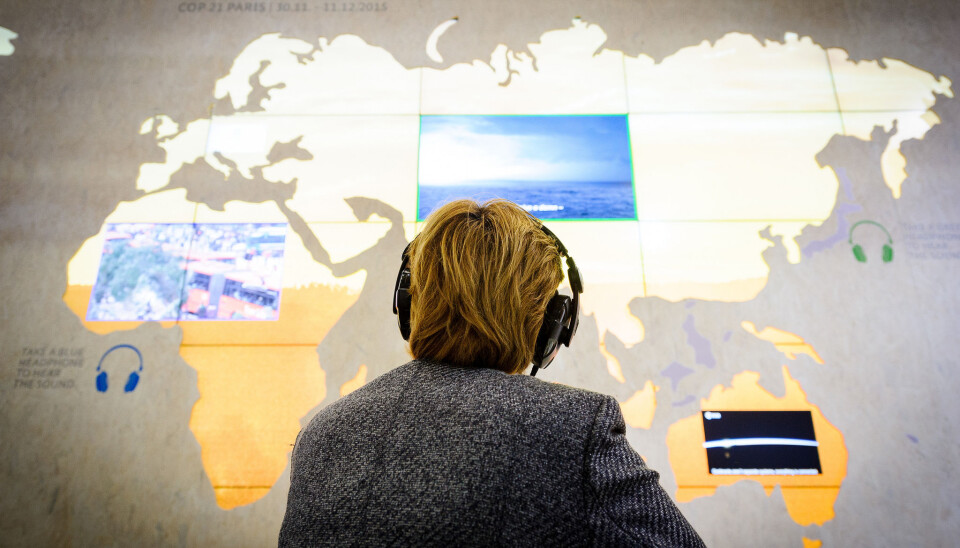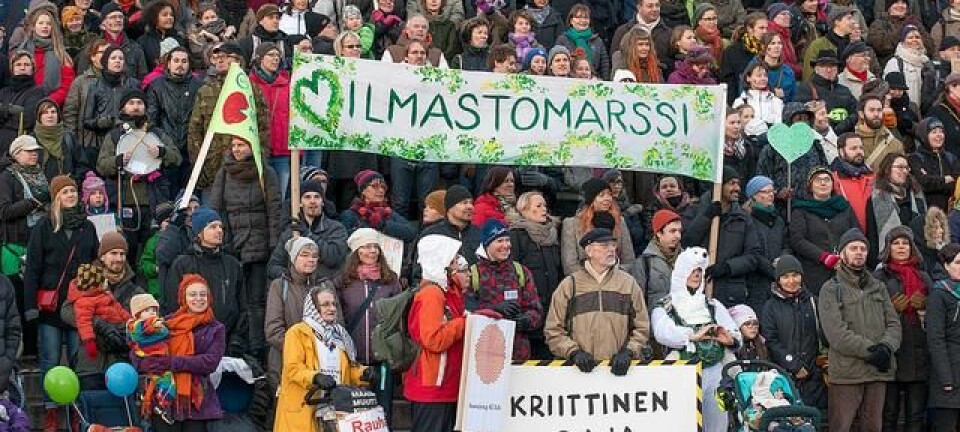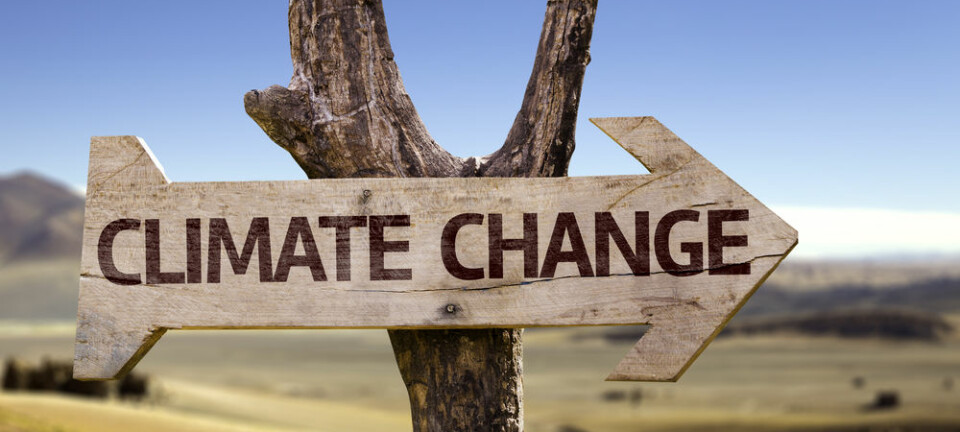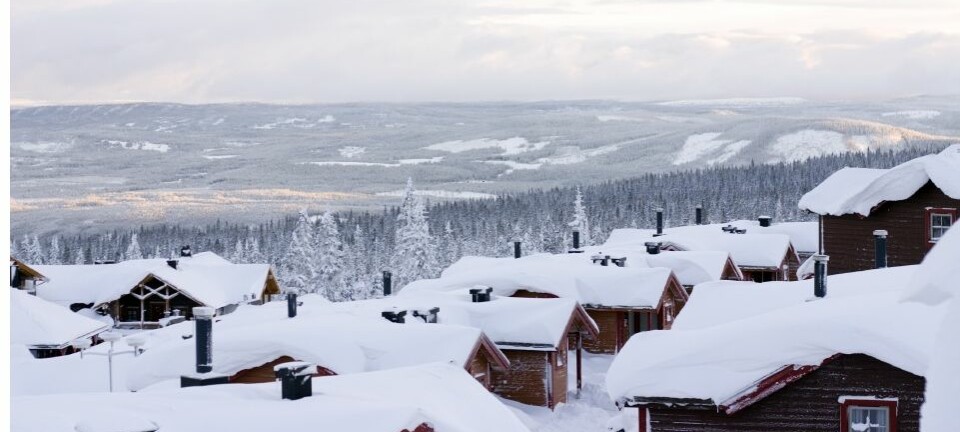
COP21: Still far away from a two degree global warming limit
The world holds its breath as 150 world leaders attempt to negotiate a deal to limit global warming. What have they agreed on so far?
UN Secretary-General Ban Ki-moon has called it a political moment that may never come again.
One thing is certain, the world’s attention is focused on the COP21 meeting in Paris where world leaders have been negotiating since last Monday to try and reach an agreement that will limit global warming.
The hope is that leaders will reach a consensus to limit global temperature rise to two degrees Celsius--but as the meeting enters in final days it remains uncertain if they will succeed in this.
But what exactly has been going on in Paris? ScienceNordic provides a roundup:
1. Pledges fall short of two degree Celsius target:
In order to reach the objective of remaining below 2 [degrees Celsius], parties will need to implement more drastic policies beyond 2030 and increase the intensity of the effort.
According to the UN’s website they have received 157 pledges to reduce greenhouse gas emissions: the so-called Intended Nationally Determined Contributions (INDCs).
An earlier EU report, based on 155 of these pledges representing 90 per cent of global emissions, reported that these current climate commitments would fall short of the two-degree Celsius target and instead put us on track for three degrees Celsius warming.
READ MORE: COP21: What does two degrees Celsius global warming look like?
Speaking to ScienceNordic ahead of the meeting, Dr Hans Sanderson, environmental chemist at Aarhus University, Denmark, and leader of a large European climate change adaptation project, was also doubtful that the two-degree target would be met:
“It’s a fine target, but at this stage we’re quite naive to think we’ll achieve it,” says Sanderson.
By day 3 of the meeting, COP21 President Laurent Fabius called for negotiations to accelerate while prominent climate scientist and former head of NASA’s Godard Center, James Hansen, criticised the original two-degree target.
Speaking to The Guardian newspaper Hansen described the negotiations as “half arsed and half baked” and referred to the two degrees target as “definitely dangerous”.
Meanwhile, initiatives by cities may be crucial to meeting emissions targets. During the meeting, a UN report on climate smart cities was launched by UN Secretary-General Ban Ki-moon, with the support of celebrities including Leonardo DiCaprio, Robert Redford, and Sean Penn. The report outlines initiatives to help cities finance future infrastructure projects aimed at cutting emissions.
Delegates signed off on a draft negotiating text on Saturday, and now it is over to the politicians to decide the exact wording of the deal.
Some countries have been slowing progress when it comes to preventing climate change, according to members of the Climate Action Network (CAN). Each day of the conference CAN awards the ‘Fossil of the Day’ to the country they believe to have done their ‘best’ to block progress during the talks. Some of this years winners are Denmark, Saudi Arabia, Venezuela, Belgium, and New Zealand.
READ MORE: Seven tips to cut your CO2 emissions
2. A push to put a price on carbon
Support for a price on carbon has featured heavily so far in the press clippings coming out of the COP21.
Proponents include the Norwegian Prime Minister, speaking ahead of the COP21 at a conference hosted by the Norwegian British Chamber of Commerce in London, and US President Barack Obama speaking at the COP21 on Tuesday, and climate scientist James Hansen.
Prior to the meeting, 78 CEOs of major firms including Accenture, BT Group, Dow Chemical, PepsiCo, Nestlé, Unilever and PwC, also came out in favour of a price on carbon in an open letter to heads of states attending the meeting.
READ MORE: Climate: a challenging type of justice
Speaking to ScienceNordic, environmental economist Professor Thomas Sterner, from the School of Business, Economics, and Law at the University of Gothenburg, Sweden, said that a scheme to put price on carbon receives widespread support from economists around the world.
“Economists agree that if you wanted to do something [to reduce emissions] then the most efficient thing to do is to have a price of carbon,” he says, adding “but how to do this, be it by taxation or carbon trading, is something we don’t quite agree on,” said Sterner.
3. Focus on the most vulnerable countries
The meeting opened with a strong statement from 30 countries believed to be most at risk from climate change, including Afghanistan, The Maldives, Ethiopia and Costa Rica.
They called on all other nations to aim for a more ambitious 1.5 degrees Celsius target, by cutting emissions to zero and transitioning to 100 per cent renewables by 2050. The declaration is reported to have been signed by Christiana Figueres, executive secretary of the UN Framework Convention on Climate Change, and Mary Robinson, former president of Ireland.
This was repeated in a statement by UN expert Gyan Chandra Acharya, the Under-Secretary General and High Representative for the Least Developed Countries, Landlocked Developing Countries and Small Island Developing States, writing in The Guardian.
READ MORE: COP21: Are we ready for what climate change has in store?
4. Three of the big polluters in direct discussions: US, China, and India
The US and China reiterated their pledges made at the G21 meeting in Australia in 2014, in a joint meeting between US president Barak Obama and China’s President Xi on the opening day of the COP21.
In separate talks, President Obama was due to meet with Indian Prime Minister Narendra Modi, to secure their commitments to transitioning to renewable energy. Whilst India have committed to securing more of its energy from renewables, they have so far not released specific greenhouse gas emission targets.
Securing commitments from these large emitters is described as crucial to the success of the Paris meeting, but there are challenges ahead for India according to Bill Hare, senior author on the IPCC report.
READ MORE: This is how we motivate people to tackle climate change
Speaking to The Guardian he says “India, has a major interest in the outcome of the world reducing emissions sufficiently to get below two [degrees Celsius]. I think that’s a major challenge.”
“We’re seeing [in India] one of the fastest upscalings of renewables that have ever happened on the planet under way now but, on other hand, a huge lot of talk from the coal ministry about it [coal] being essential to India’s future,” says Hare.
5. Side events
Running alongside the main negotiations are a number of side events.
Speaking at one such event, Elon Musk, chief executive of Tesla Motors addressed students at Sorbonne University, Paris, called for nations to press ahead and adopt a carbon tax.
The Sustainable Innovation Forum (SIF15), which is organised as part of the COP21, is billed as the largest business focused side event and scheduled for the last two days of the meeting.
Here, business leaders, politicians and representatives from NGOs, civil society, and the finance sector, including Icelandic President Ólafur Ragnar Grímsson, will gather to discuss how businesses can innovate towards a green economy.
READ MORE: Is the UN too slow to tackle climate change?









